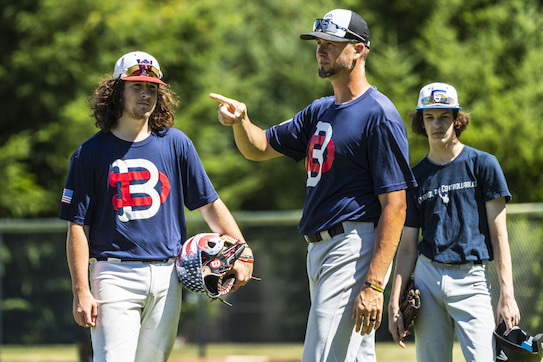 I first experienced “Dead Arm” as a young professional. It’s painful. It’s annoying. If it gets bad enough, it feels like your arm will break at any moment with each throw. It can even wake you up at night. It sucks!!
I first experienced “Dead Arm” as a young professional. It’s painful. It’s annoying. If it gets bad enough, it feels like your arm will break at any moment with each throw. It can even wake you up at night. It sucks!!
“Dead Arm” is a fancy word for “Fatigue.” It seems it hits most players in a few different areas. The biceps muscle, the triceps muscle, the posterior side of your upper arm and bicep tendonitis is also a sign of fatigue.
With the first three, you will experience a dull ache, not a sharp pain. The area feels very tight. With the tendonitis, you will experience a sharp pain in the front of your shoulder when your arm is laid back and as it comes forward to throw. Think “External Rotation”.
These all happen when your arm isn’t ready for what you are doing to it, in other words, when it’s not in shape or conditioned for the number of throws you are making or made or for the amount of effort or intent you are throwing with or your delivery (pitching/throwing mechanics) are inefficient causing more strain on your arm. Point blank, your arm isn’t in shape for what you are demanding from it. Here are a few examples that may lead to “Dead Arm”…
– An easy week of Baseball, maybe 2 days of easy catch, and then a busy week filled with multiple practices and games which equals a lot of throws and competitive throws, often too many for what your arm is conditioned for.
– Going from being a one to two inning guy, 15-30 pitches, to all of the sudden throwing multiple innings with an extreme number of pitches compared to what your arm is used to.
– Not pitching in game situations for a week or two and then going out and being pushed to a max pitch count, 60/70/80/90 pitches. You will have felt great in the game and most likely the few days after but when it, “Dead Arm”, comes, understand it’s most likely because of what you put it through the week prior.
– Finishing a school ball season, taking a week or two off to “recover”, and then jumping right back into long practices and games. Ouch! This happens all too often. Understand that all it takes is 3-4 days of no throwing for a pitchers arm to loose stamina, for a pitcher to loose feel for their delivery and feel of their release point.
– Poor mechanics that cause a pitcher to try and create velocity with their arm. Velocity is a byproduct of power, momentum and torque created from proper use of the body.
This can all be managed with…
– A good arm care routine on throwing days.
– Taking a day off from throwing a baseball once or twice a week.
– Following a pre season throwing program leading up to the season so you are built up and ready to throw 45-60 pitches your first outing.
– Not completely shutting it down between school ball and summer ball.
– Keeping your delivery on point where you are using your body to create power and not using your arm to generate velocity.
– Throwing regular weekly bullpens in a competitive manner, in other words, as close to game speed as possible.
– A continual focus on how your body moves while throwing the ball.
With a little bit of rest, you can see the symptoms go away within a week or two.
If you are a parent and coach who did not pitch as a player, it may be hard to really understand this. Please take this information seriously as pitching is hard enough as it is, let alone doing it with this sort of ailment. Take care of those arms. Make decisions based on what’s best for the player and their safety and health. Make sure they are throwing regular bullpens and make sure they are utilizing some sort of arm care routine.
MOST IMPORTANTLY…MAKE SURE THEY ARE CONDITIONED FOR THE NUMBER OF PITCHES YOU ARE WANTING THEM TO THROW.
Respect those arms Players, Parents & Coaches!






